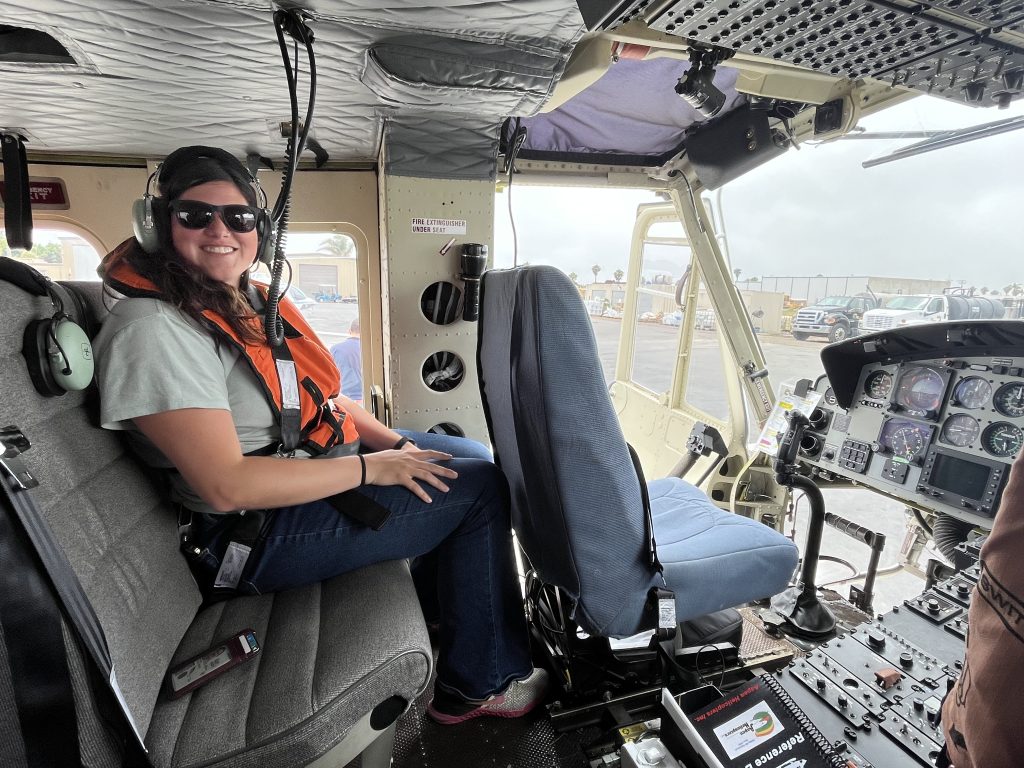Fur seals and sea lions on San Miguel Island: a research experience with NOAA
What brought a UW Marine Biology student to California in 2023? Marine mammal research! Ashley Rendon, in her junior year at UW and an Air Force reservist, spent just under a month with NOAA’s Marine Mammal Laboratory on San Miguel Island, the westernmost island of the California Channel Islands. 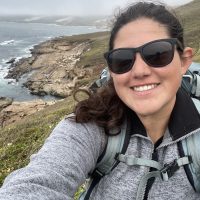
Finding out about the internship through an email sent by UW Marine Biology adviser Joe Kobayashi, Ashley applied to be a part of the research experience which focuses on population abundance, vital rate estimates, and foraging ecology of California sea lions and northern fur seals.
Located across the Santa Barbara Channel, in the Pacific Ocean, San Miguel is a remote island accessible only via boat, plane and helicopter, facing quite extreme winds and weather from the open ocean. Flying out via helicopter to the island on June 30th, Ashley was part of a team of three people who worked over the summer to study sea lions and fur seals. Working with Dr. Tony Orr (PhD), a NOAA research biologist specializing in pinnipeds, and Nancy Young (MSc), a biologist with NOAA, they stayed in a remote field station that is powered by natural resources (wind and solar power).
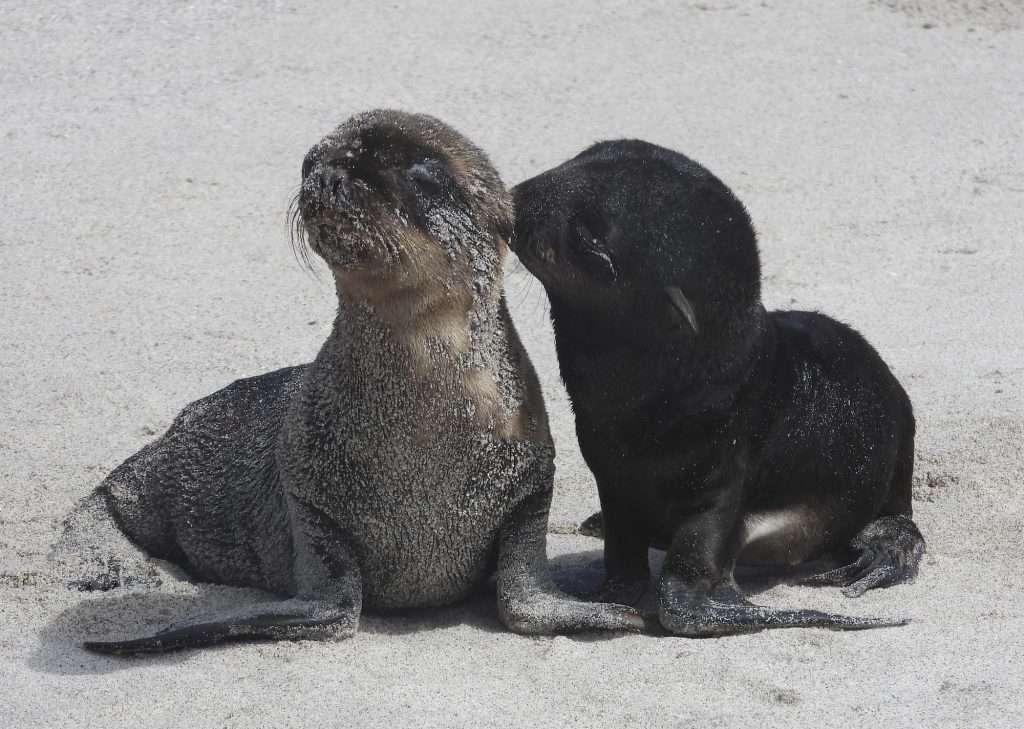
There were different facets to Ashley’s research, beginning with finding out where on the island the California sea lions and fur seals were. Venturing out with binoculars and cameras to different locations, taking photographs of marked (i.e. branded and/or tagged) animals, and then collecting ancillary information such as sex, age class, presence of nursing pups, and the size of male territories, were just some aspects. A particularly interesting part of Ashley’s work was collecting data on the condition of coats of northern fur seals (referred to as mange), which is visible from the absence of guard fur on their bodies. The mange condition is predominantly found on non-pup males though some females have it as well. This information can provide deeper insight into male (foraging) behavior and perhaps insights on resource/spatial partitioning between males and females. Animal fecal samples (i.e. scat) were also collected from the beach to be later analyzed to understand the diet of both species.
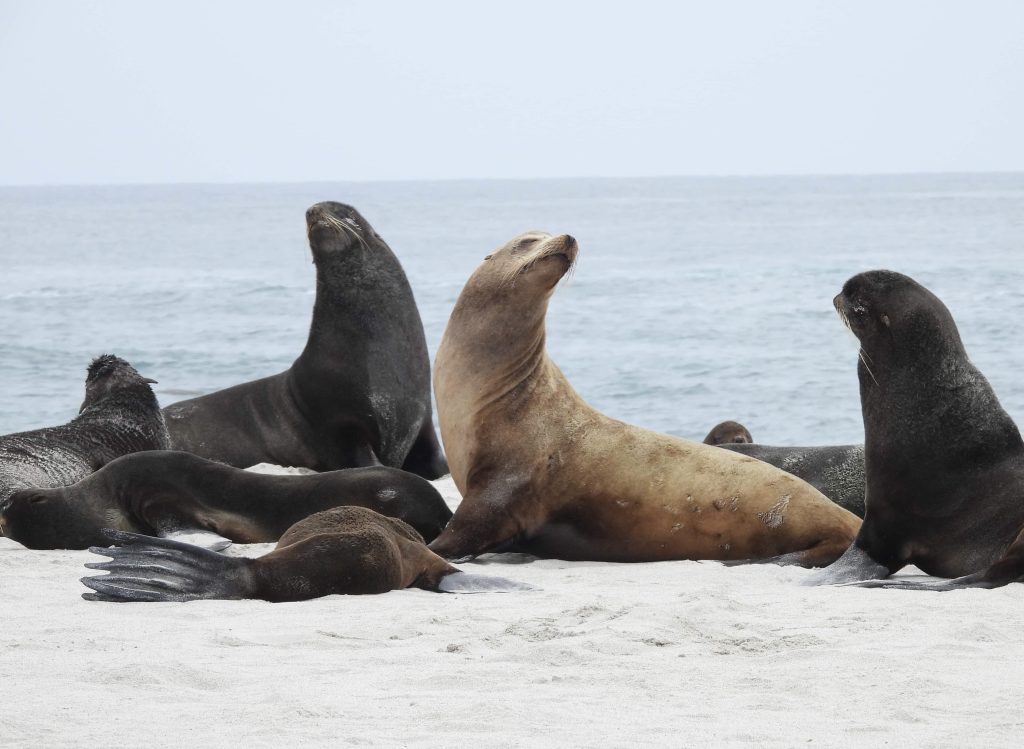
Switching gears and focusing on population abundance, Ashley and the team conducted live and dead pup surveys of both species at various beach locations. Live-pup counts were conducted on foot by having two counters (Ashley and Tony) walk through rookery sites and counting pups as they passed them using tally counters. Uncrewed aerial systems were used in other areas, reducing the disturbance caused by walking in breeding sites. Images were obtained and individual pups were counted. Pup mortality surveys were done by collecting dead pups within different rookery sites, and stacked in areas where the carcasses would not move away due to ocean waves or wind. Stacks were created to avoid duplicating counts of the same individual. Total production for each species were determined from adding the number of dead and live pups together. Deaths amongst sea lion pups can be for a variety of reasons such as trampling by larger elephant seals, mothers going out to forage and not finding enough food, encounters with other animals, and harmful algal blooms.
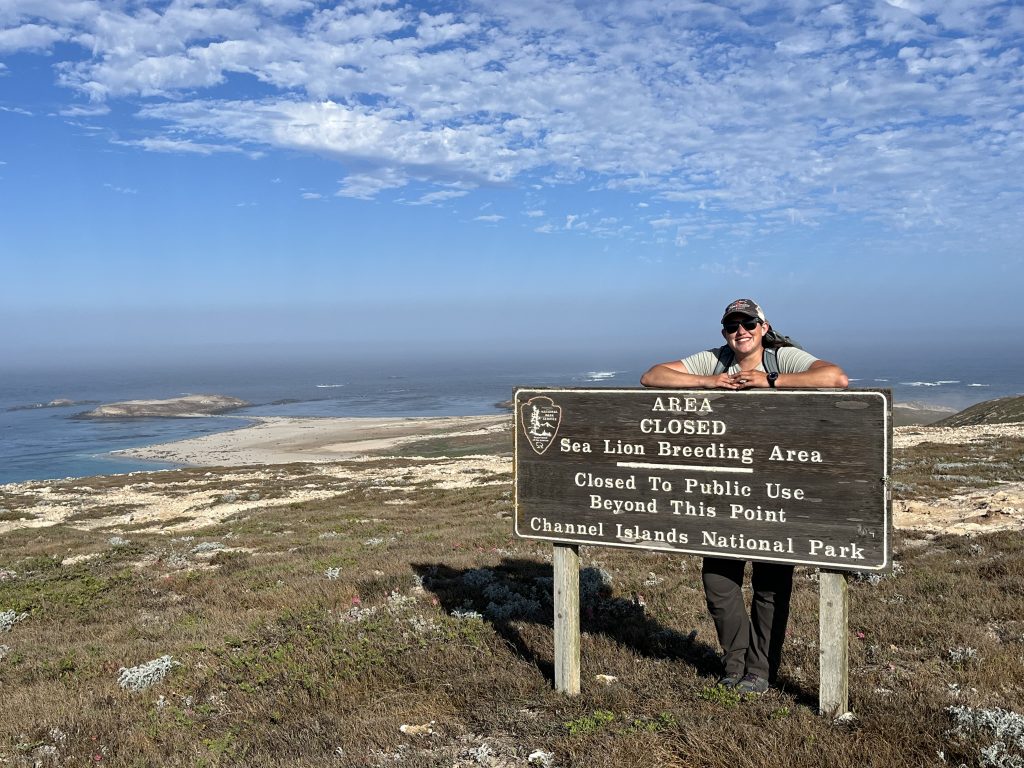
Harmful algal blooms have been observed to be a rising cause of death among California sea lions. The team observed several animals facing side effects of domoic acid as well as an increase of adult male deaths. By collecting organ and muscle tissue samples through necropsies, they hope to be able to get more information about this issue when studied in the lab on the mainland.
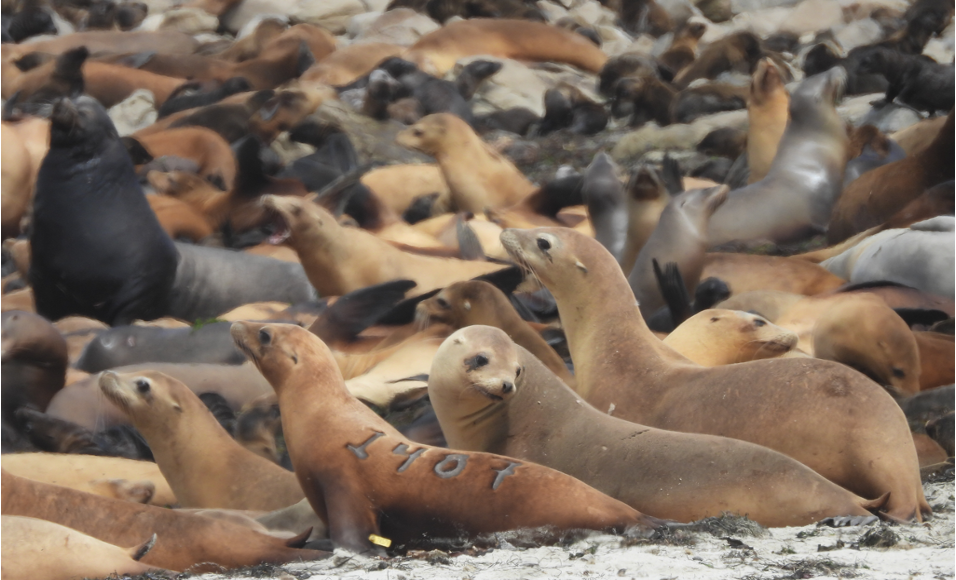
Utilizing drones was a highlight for Ashley during her internship experience, with three different types of drones in use throughout the project. Using technology to assist in research in difficult terrain like rockier beaches and cliffs, was a helpful tool.
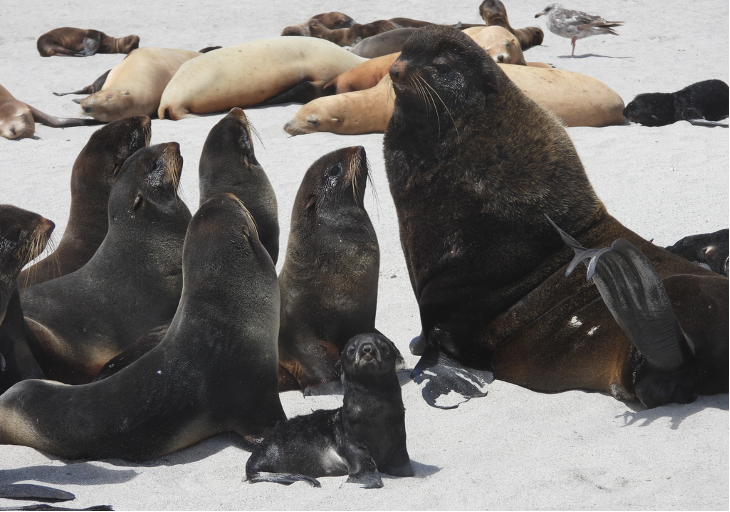
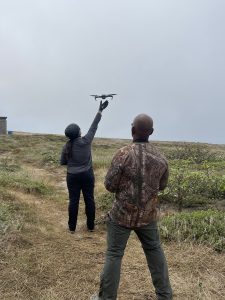
Being in this remote field location for a month provided Ashley with a unique opportunity to learn the behaviors of the different species on the island, and the way they interact with each other. Both species are territorial, and one of Ashley’s observations with fur seals is that they act very differently dependent on their sex and age class, and she noted that it was fascinating to watch these behaviors over an extended period of time and have a deeper understanding of what it means.
Working with experts in their field, some with over 30 years’ experience with marine mammals, was another highlight for Ashley, and she’s already looking forward to next summer and another internship, and hopefully working for NOAA one day when she graduates.
Hear Ashley’s tips for getting involved with research
My recommendations for getting involved with research include applying to every opportunity that sparks your interest. While you may not get selected for all of them, you can learn so much within the application process and interviews. Also, make sure to keep searching for new opportunities – you can hear about these from your advisor, the career & internship center, but you could even reach out to labs and ask about position openings. Expand your network and share your goals with individuals who may be able to help you with this journey. Lastly, embrace new experiences and be open-minded. Each new experience you have can contribute to personal growth as well as help you better understand what you do and don’t like.
